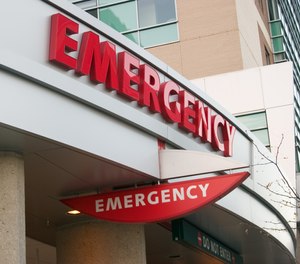
Learn how the Philadelphia Fire Department redefined service delivery, funding and success
NEW ORLEANS — Members of the Philadelphia Fire Department (PFD) shared their unique approaches to alternate destinations with attendees at the 2023 EMS World Expo.
Tab Boyle, EMT-P, BSN, fire paramedic captain; and William J. Stahl IV, NREMT-P, BS, fire paramedic lieutenant; provided a guideline for how to plan, implement and fund alternative destination programs, and shared the lessons they’ve learned along the way.
“We want to be able to help only when we’re absolutely needed.” — Tab Boyle
“You do not have to do this alone. There are so many stakeholders out there. Figure out who your allies are in your community.” — Tab Boyle
“None of this is set in stone, this is trying things and analyzing and adjusting.” — Tab Boyle
Think in terms of value, Boyle recommended. “Is it working for the clients? Is it achieving the goal you set out to achieve? Is it working for the system?” If, at the end of the funding period, additional funding can’t be procured, at least the department has acquired new vehicles and that’s added value, in addition to the programs’ success, Boyle noted.
Boyle and Stahl outlined a problem all too familiar in EMS: ED overcrowding, leading to hospital bed delays , decreased turnaround time, and burnt out personnel. Boyle cited data reporting that 50% of ED patients require just a 15 minute visit with a physician, and only 14.2% of those seen in the ED require admission.
The presenters shared unique programs the PFD has in various stages of implementation to reduce 911 calls and get into the community without an ambulance called Alternate Response (AR) Units.
Following are three takeaways from the PFD’s alternate response models.
1. Redefine service delivery
The presenters shared the PFD’s goals in adopting alternate destination programs:
Internal goals
External goals
They also shared the steps required to build your own alternate delivery model:
2. Redefine funding
One of the PFD’s unique programs is provided in partnership with – and fully funded by – the University of Pennsylvania. The PFD AR-1 crew responds in an SUV to calls on campus and in the immediate area of the Ivy League university, from 6 p.m. to 4 a.m., Wednesday through Saturday.
For minor calls, the AR-1 crew will assess the students, and, if appropriate, obtain a refusal and provide a courtesy ride to the University hospital, which has a protocol for processing students. The students stay within the University system and the parents aren’t billed. The program solves unique challenges for the University, while preserving ALS resources for critical responses.
Boyle and Stahl fielded several questions from the attendees; many, unsurprisingly, related to funding and reimbursement. For example, if you’re obtaining a refusal, and you’re providing a courtesy ride, then how are you being reimbursed per patient?
Boyle noted, as the programs are fully funded, the department is not concerned about billing per patient for these services. The programs support the vehicles and staff needed to provide the service, and the value is realized in time and resources saved, and in the patients assisted with the right resources for them.
Some funding is opportunistic, Boyle noted. Look for those organizations in your community with deep pockets and unique needs that can provide a mutual value.
3. Redefine your measure of success
It’s difficult to measure calls that aren’t made, Boyle pointed out. So it’s difficult to quantify the value of a program like the PFD’s AR-2, which responds to substance abuse cases and transports patients directly to rehab facilities, though certainly, the program is having an impact on future calls.
Boyle noted Stahl has the best measure of success she has ever heard. It’s simple: one. If they’ve saved even one person from addiction, then that’s a success.
After reversing an overdose, patients are monitored in the AR-2 vehicle to ensure they don’t need the hospital, while a case manager/social worker in the truck provides an addiction assessment and finds the individual placement in a rehab facility.
In the Philadelphia Kensington area, Stahl noted there are more people who are underhoused, with substance abuse issues on one corner then there were attending the session. As Kensington is designated a “high-intensity drug area” by the DEA, the PFD was eligible for grant funding to address the opioid crisis, and obtained a grant from the University of Baltimore which funded the unit for 2 years.
In the typical 911 cycle, Boyle outlined, after an overdose is reversed, the patient is transported to the ED, where they wait to be sent to a sobering or crisis center, where they wait to be admitted to a rehab facility. This can take 72 hours, during which the patient is experiencing withdrawal, is feeling sick, and is likely going to leave. PFDs AR-2 can get patients to definitive care in the form of a rehab facility in 2 hours – sometimes even quicker – increasing the likelihood the patient will make it through the doors.
If just one person breaks out of the addiction cycle in Kensington, that’s a success, Stahl stressed.
Copyright © 2025 EmsGrantsHelp.com. All rights reserved.
